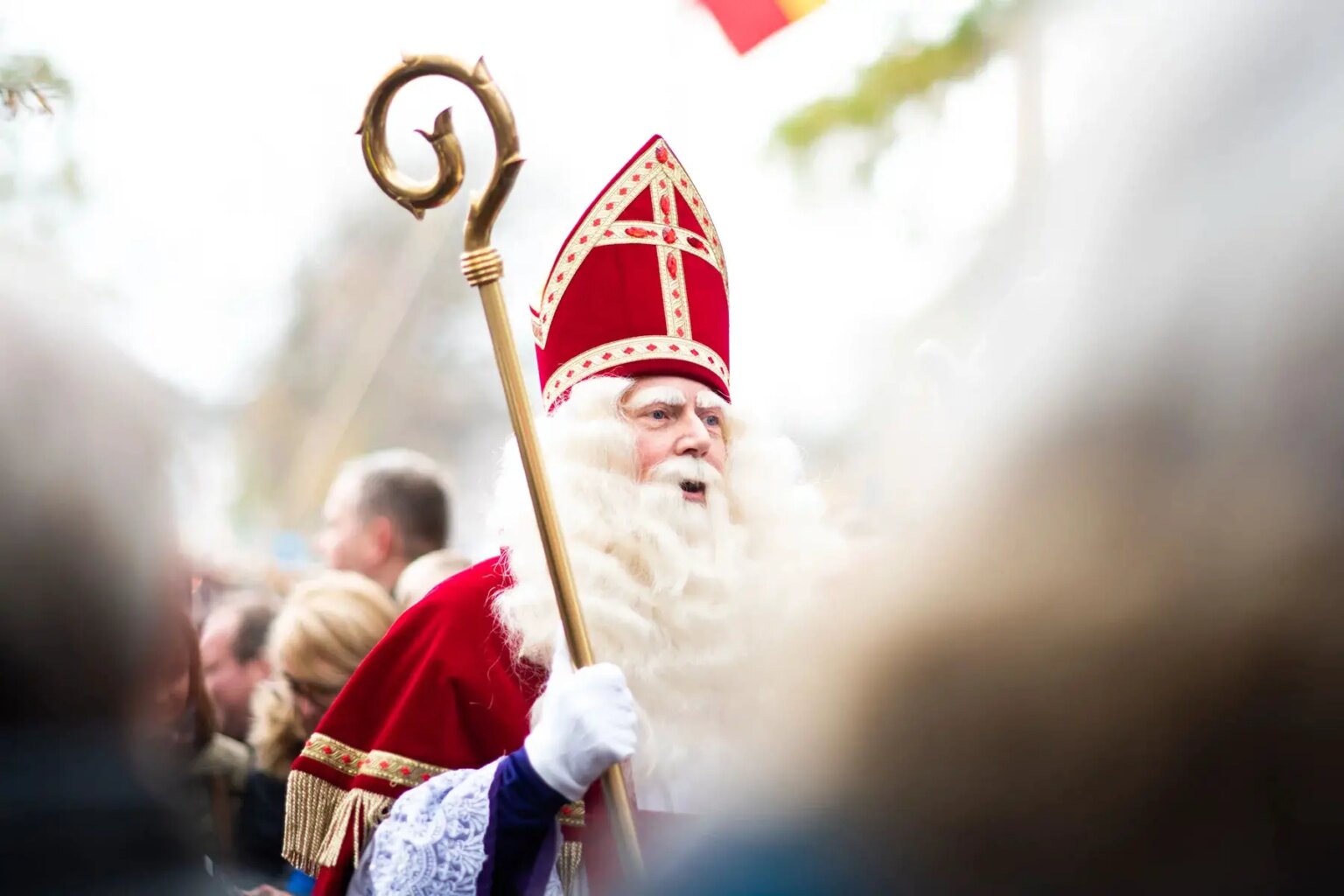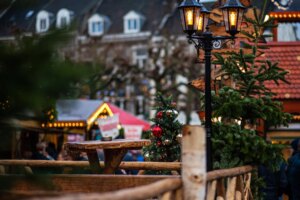As the winter season arrives in the Netherlands, so does Sinterklaas. To Dutch people, this distinct holiday is more than just a date on the calendar; it’s a time when the country comes together to celebrate and stuff themselves with sweets and chocolate.
As an expat, however, you might have some questions (and raised eyebrows) about this particular (and sometimes controversial) holiday on 5 December.
Learn more about the origins, customs, and cultural significance of Sint en Piet in the following sections:
N26
N26 is the bank you'll love to use: open your bank account in just eight minutes with no paperwork. Take control of your finances with one app where you can manage limits, set your PIN, lock/unlock cards, and make no-fee transactions anywhere in the world.
Sinterklaas: a Dutch tradition
Each year, Sinterklaas or Sint Nicolaas (Saint Nicolas) travels from Madrid (Spain) to the Netherlands and Belgium to celebrate his birthday on 5 December. He’ll give away candy (snoepgoed) and presents, and that’s why everyone loves him so much.
The Sint is assisted by a large number of Petes (Pieten). These are the ones who leave candy and presents at your house. Obviously, Sinterklaas is there as well, but he’s too old to go through the chimney. That’s why the Petes do it for him and why they are usually covered in soot.
The Saint and his entourage travel by steamboat. If, by any chance, their arrival destination doesn’t have a river or water close by, they’ll take some other mode of steam engine. For example, in 2019, they used a steam locomotive to travel to Apeldoorn.
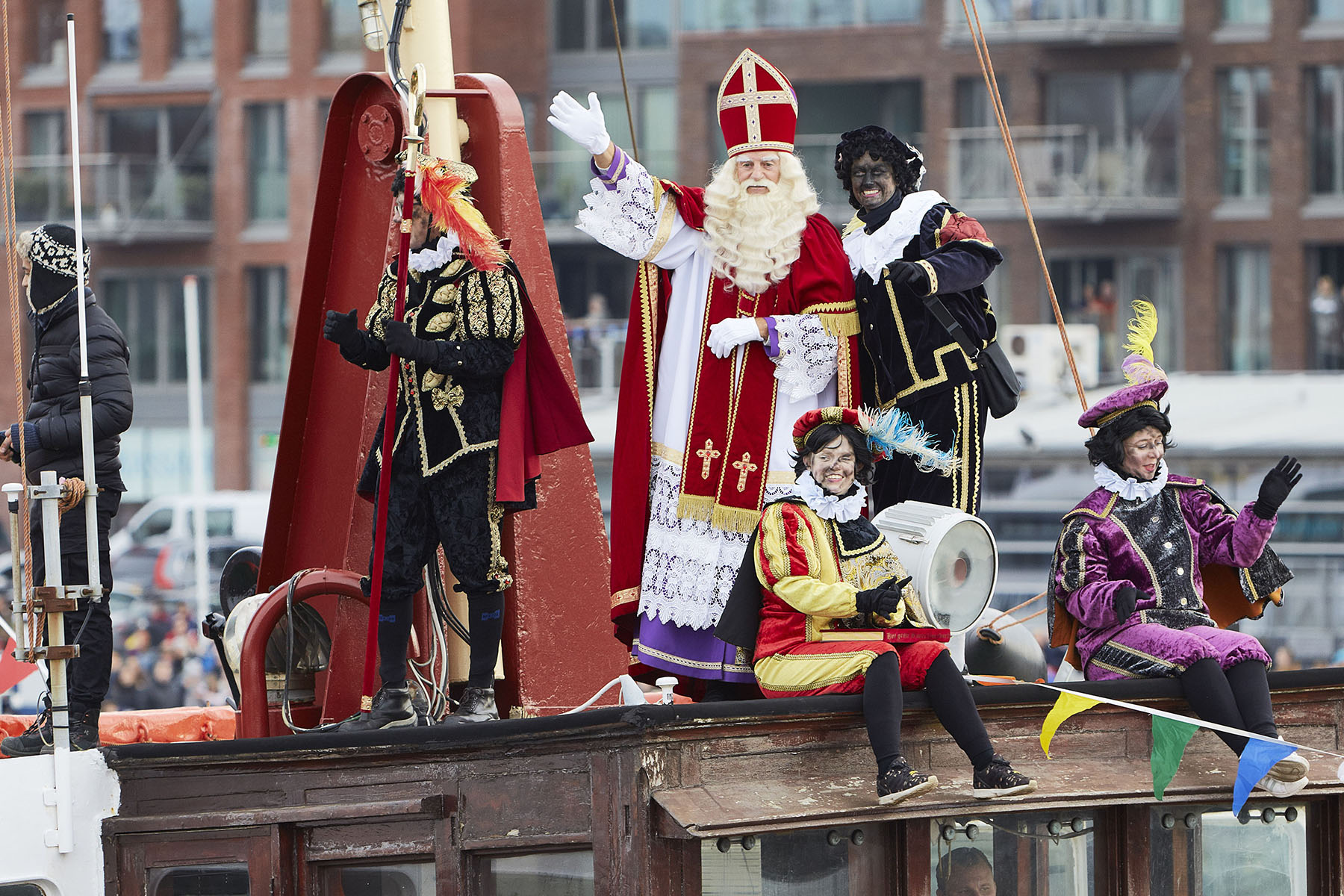
Sinterklaas and the Petes arrive during the third and fourth weekend of November. The national arrival (landelijke intocht) takes place on the third Saturday in whichever city is chosen that year. On the fourth Sunday, there’s a local parade in your city, town, or village.
In the Netherlands, the Sint travels on a white horse (schimmel), which is called Ozosnel (literally translated as Ohsoquick). They’ll stay in the country for 2-3 weeks to prep for the big day. While Sinterklaas’ actual birthday is on 6 December, presents are traditionally given on the evening of 5 December (pakjesavond or Sinterklaasavond).
Sint and Piet return to Spain the next day, and another year of waiting begins.
When and where does Sinterklaas arrive in 2024?
The national arrival of Sinterklaas and the Petes takes place in Vianen on 16 November 2024. The Saturday after that, 23 November, they will visit your local city or town.
What is Sinterklaasjournaal?
The Sinterklaasjournaal is a popular (fictive) news show that focuses on the leading characters as they travel to and through the Netherlands. It usually starts a week before Sinterklaas’ arrival and is broadcast every day until 5 December.
Typically hosted by Dieuwertje Blok, the show format is like an actual news program with fragments and reports. It often features outrageous storylines that can pose a problem for the holiday celebration. For example, in 2022, they reported that the steamboat Pakjesboot 12 had sunk to the bottom of the sea. Luckily, Sinterklaas had the foresight to order a new ship, and the event was saved.
In 2024, the show will be hosted by Merel Westrik, allowing Blok to recover from a medical issue.
So, who is Sinterklaas?
Saint Nicolas was a fourth-century bishop from Myra in present-day Türkiye. He was known as a generous gift-giver with a non-creepy soft spot for children, and his miracles often see him saving them from their inevitable fates. For example, in one story, he sneaks three gold coins into the shoes of three impoverished girls to ensure they can grow up as decent, devout Christians.
Another aspect of his legend is that he was a great traveler and seafarer. In one telling, Saint Nicolas calms down a stormy sea and saves the ship and the crew he is traveling with.
As such, he is the patron saint of children, sailors, travelers, and all of Greece, among other things. Because the Netherlands and Belgium were historically seafaring countries, Saint Nicolas became a popular figure in their folklore.
Like Sinterklaas, Santa Claus and Father Christmas are also based on Saint Nicolas.
A mean old man or a saint?
The tradition of Saint Nicolas Day (6 December) is nothing new. It’s been around since the Middle Ages, with the earliest written record being from 1360. Basically, well-behaved children were given food, presents, and money, and mischievous children were admonished.

Over the centuries, Saint Nicolas gradually came to be seen as a sort of bogeyman. This had likely to do with the rise of Protestantism and the ban on Catholic saints. While good children were still rewarded, misbehaving children would receive a rod (roe) or a bag of salt. He was also used as an educational tool (i.e., “Watch out, otherwise Sinterklaas will…”).
This scary image changed in 1850 when the children’s book Sint Nicolaas en zijn Knecht was published by school teacher Jan Schenkman. Much of the current Sinterklaas tradition derives from this picture book.
It describes Saint Nicolas as a dignified old gentleman from Spain. This saintly man (goedheiligman) was stern but friendly, arrived in the Netherlands by steamboat, kept a book of naughty and nice children, and rode his brown horse on the rooftops at night. He also had a young, nameless Black helper who would help him give away presents.
The book was hugely popular and remained in publication until the early 1900s. The reprints added more details to the story. For example, the Black assistant became known as Black Pete (Zwarte Piet), and the Sint wouldn’t punish mischievous children anymore; Black Pete would do that.
From the 1950s onwards, Sinterklaas slowly transformed from a stern old bishop to a sweet and approachable children’s friend. Nowadays, his character is of someone a bit clumsy and forgetful, yet sharp-of-mind and quick-witted.
What does Sinterklaas look like?
Sinterklaas is a tall white man with a slim build, long white wavy hair, and a long white beard. He has twinkling eyes and is usually jolly in a very Dutch, down-to-earth kind of way.
His traditional dress is that of a bishop, with a purple under-dress, white over-dress, white gloves, and a red cloak. He also wears a tall red miter (mijter) with a golden cross and carries a long golden staff with a curl at the end.
The Saint usually holds a book (or a Pete close by to hold the book) in which he keeps track of all the children in the Netherlands and Belgium – whether they were good or bad, their addresses, family members, and what presents they received previously.
The artist formerly known as Black Pete
Sinterklaas is assisted by Pete. These are men and women dressed in colorful 16th-century clothing, complete with puff pantaloons and berets with feathers. Some also wear ruffles or white page collars.
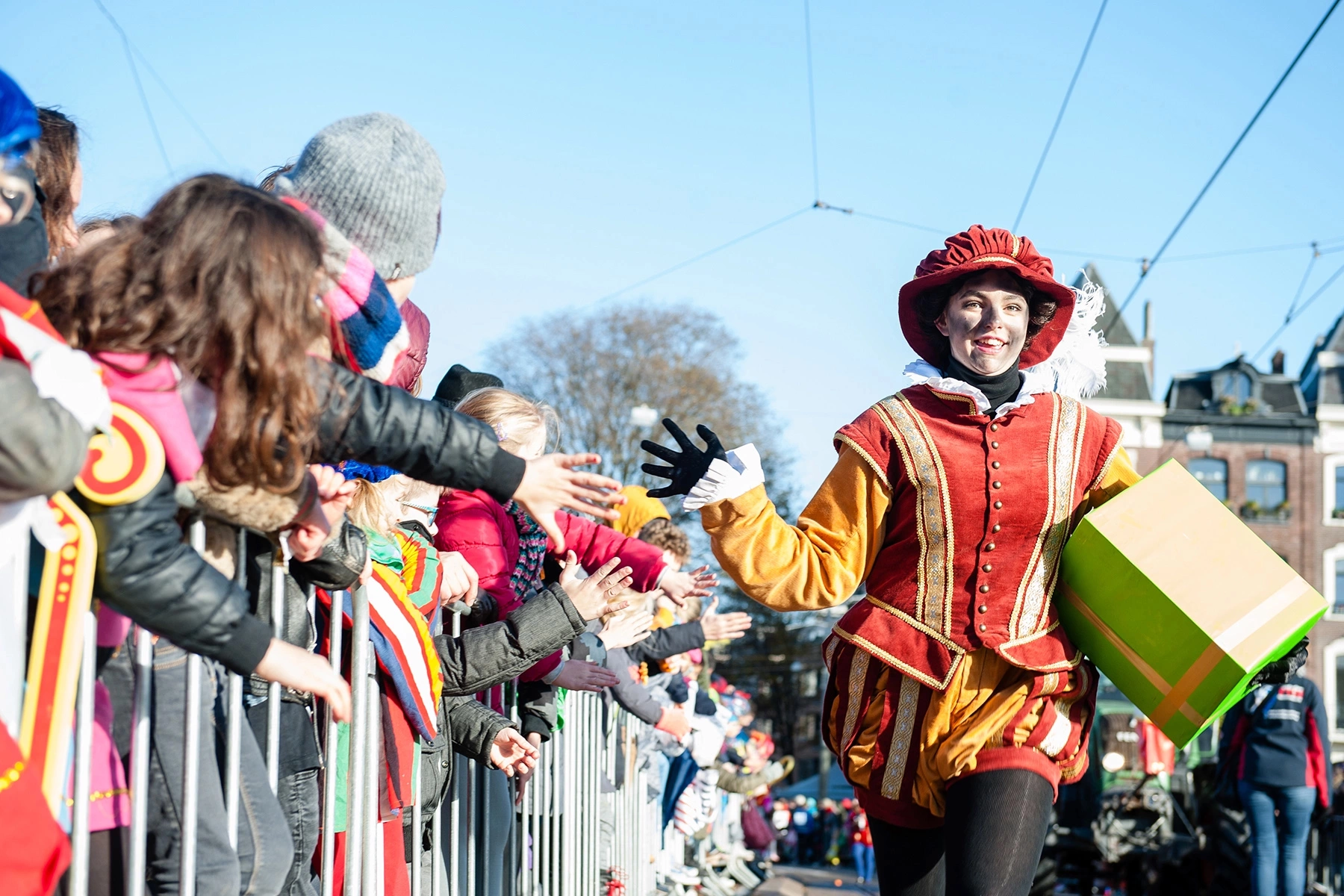
While some are ‘just’ Pete, others have a specialty. For example, Hoofdpiet manages all the other Petes, and Boekpiet is responsible for keeping track of Sinterklaas’ book.
What was the Zwarte Piet tradition?
The first rendition of Pete comes from the 1850 children’s book Sint Nicolaas en zijn Knecht. In the book, he is the nameless Black servant (knecht) of Sinterklaas. He wears a sailor’s uniform, rides a black horse, and lugs around Sinterklaas’ stuff. The picture book does not portray him as a stereotypical caricature; he’s just a regular person doing a job.
In the editions that followed, the character was given a name and an outfit change. Black Pete now donned the clothing of a 16th-century Moorish page – with puff trousers, ruffles, and a beret with a feather. He often danced around and sometimes had bells that jingled. He also took to carrying a rod with which he could spank naughty children. Extremely misbehaving children were told Pete would force them into his sack and take them to Madrid as cheap labor.
From the 1900s onwards, the image of Zwarte Piet transformed into the blackface minstrel type that (most) people hate today. Sometimes, he wore a fez or a turban. But he always had huge red lips, a poorly maintained frizzy afro, and large golden earrings. His painted-on skin color was also black as night.
As culture shifted in the 1960s, Black Pete changed as well. He started speaking without an accent and no longer pretended – or had to pretend – to be overly stupid. He also lost the role of punisher and, instead, started specializing in a particular job (e.g., Navigational Pete (Wegwijspiet)). Like Sinterklaas, Pete became a friendly and approachable figure.
What is the modern tradition?
From the 1980s onwards, Zwarte Piet was seen as the intelligent, capable assistant of an old, bumbling Sinterklaas. His afro was less frizzy and more curly, and the red lips weren’t as prominent anymore. Nevertheless, he was still the Black lackey of a white master type.
Annual demonstrations in the 1990s and 2010s caused a snail-paced culture shift. While some regions experimented with Rainbow Petes (who were painted green, blue, and purple), most chose to go with a Sooty Pete (Roetveegpiet). This new Pete is no longer Black; instead, it is a white person covered in soot.
The soot element is added because proponents of the traditional blackface version often use the illogical rhetoric that the character is black due to the soot from climbing in and out of chimneys. Strangely, while their skin is “blacked by soot”, their clothes remain clean and colorful; but this continues to be up for debate.
In 2018, the Sinterklaasjournaal showed a mix of traditional blackface and Sooty Petes. By 2019, they had completely switched over to Sooty Petes only. The 2019 national arrival of Sinterklaas also featured Roetveegpieten exclusively.
The Black Pete controversy
Zwarte Piet has long been the cause of controversy. Local and international activists regard the portrayal as racist and demand it to stop.
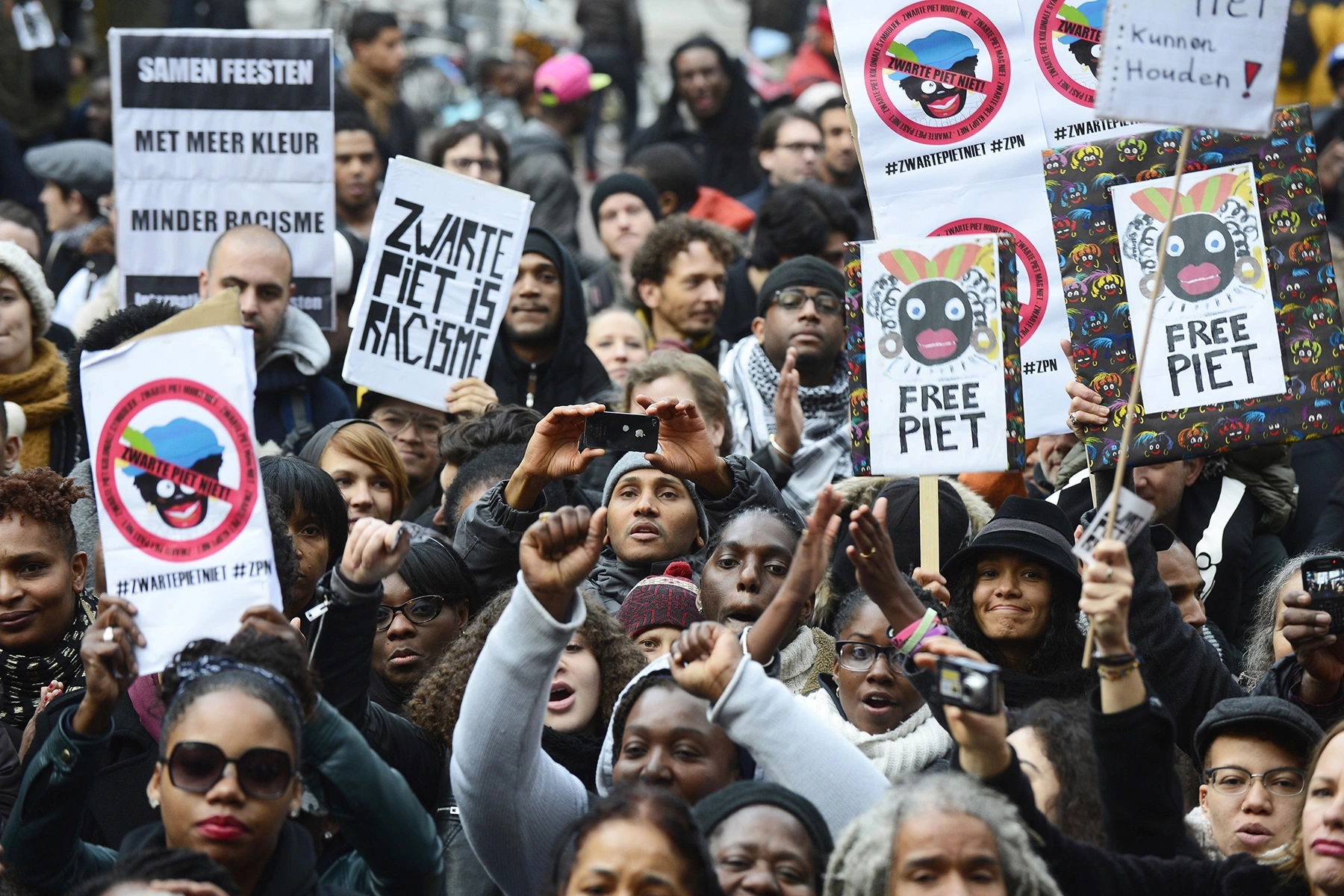
Interestingly, while the debate about the character (zwartepietendiscussie) has come to a head in recent years, it’s actually nothing new. Pete has been a point of discussion since the 1920s.
Black Pete = racism?
In 1927, a man was hospitalized after calling a black man a derogatory name. When the assailant had to defend himself in court, he complained about being continuously harassed with disparaging terms, including Zwarte Piet. A few years later, the complaints had gotten so frequent a similar case did not even make it before a judge.
In 1930, Melis Stoke (pen name of Herman Salomonson) linked the character to the exploitation of Black people by white people. In the opinion magazine De Groene Amsterdammer, he called to break the stereotype by having a Black Sinterklaas and a white Pete.
The dominant debate in the 1940s and 1950s was about the educational value of a frightening Black Pete. Parents questioned whether it was a good idea to scare children into behaving well.
Critics condemning the subservient and degrading nature of the character gradually gained the upper hand. In the 50s and 60s – especially in the years preceding and after the independence of Indonesia in 1961 – Zwarte Piet was called out as a hurtful racist stereotype.
In a 1968 article in the newspaper Panorama, Riet Grünbauer first posed the idea of white Petes. She slammed the Uncle Tom cliché and demanded white people no longer had fun at the expense of another race. Like the activists today, she was met with much media attention, anger, and threats.
Demonstrations and violence
When Surinam became independent in 1975, many Surinamese people moved to the Netherlands. In their new homeland, they were confronted with the blackface tradition. They started organizing in the 1980s, and yearly demonstrations followed in the 1990s.
The 2000s were relatively quiet. The discussion kicked off again in 2011 when Quinsy Gario and Jerry Afriyie started the project Zwarte Piet Is Racisme (Black Pete is Racism). During the national arrival that year, they wore shirts that said the name of the project and were promptly arrested. From that year on, however, they’d arrange annual protests.
In January 2013, a United Nations (UN) representative called for a debate. After a much-heated discussion, the organization distanced itself once again in July of that year.
In 2014, the activist organization Kick Out Black Pete (Kick Out Zwarte Piet – KOZP) was established. As the name would suggest, they campaign to remove the character from the festivities. That same year, a Dutch judge ruled that too many people were offended by Black Pete. As such, the persona should not be present during the local event in Amsterdam.
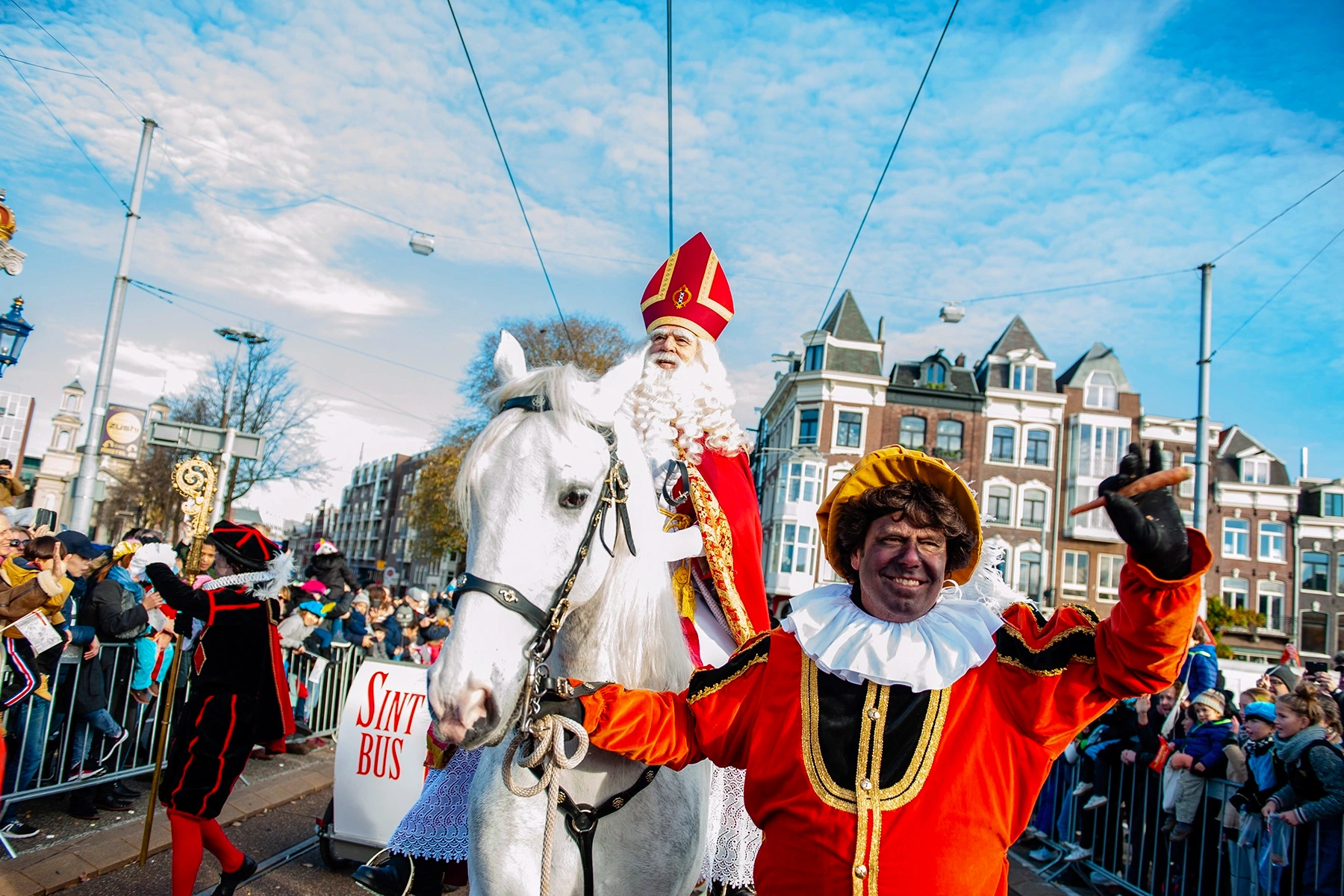
This set a precedent. Stores across the Netherlands decided to stop using the Zwarte Piet character to promote the Sinterklaas holiday. For instance, Albert Heijn and HEMA banned the persona from its stores in 2014 (though later backpedaled), and Bijenkorf introduced a Golden Pete in 2015.
Meanwhile, the debate had become increasingly more polarized and violent. In 2016, for example, Afriyie was assaulted by the police. In 2018, KOZP activists were verbally abused and pelted with eggs while police stood by and did nothing. And a year later, a group wielding fireworks and batons disrupted an anti-Zwarte Piet meeting, causing much havoc and fear.
Black Lives Matter protests
The death of George Floyd (May 2020) sent shockwaves throughout the world. Black Lives Matter protests also erupted in the Netherlands, and the murder greatly influenced the Black Pete debate.
In June 2020, then-Prime Minister Mark Rutte – who had laughingly defended Zwarte Piet and joked about wearing blackface himself in 2014 – admitted the character was offensive and the country had a problem with racism.
In August of that year, Facebook and Instagram banned images of Black Pete, and online retailer Bol.com dropped the character from its store. Google joined in October, announcing it would ban advertising that featured any Pete – whether it was Sooty Pete or the traditional blackface version. Similarly, YouTube would no longer monetize videos that featured the character either.
The opinions of the population also changed. While in 2013, 86% of the Dutch were in favor of the traditional blackface Pete, this had dropped to 53% in 2022. According to a poll that year:
- Roughly 37% of the Dutch population believe the Roetveegpiet is unacceptable
- Around 53% of respondents think Roetveegpiet is acceptable
- However, 53% also see Zwarte Piet as a tradition and not racist
Currently, large cities like Amsterdam, Rotterdam, The Hague (Den Haag), and Utrecht feature Sooty Pete exclusively. Some small villages and towns still use only Zwarte Pieten or a combination of both. You can check Meldpunt Zwarte Piet to see what version of Pete will appear in your local area.
What are common Dutch Sinterklaas traditions?
Candy and chocolate letters
An integral part of the Dutch Sinterklaas tradition is candy and baked goods. The most iconic Sinterklaas treats are pepernoten or kruidnoten – small, round baked cookies with aromatic spices like cinnamon, nutmeg, and cloves.
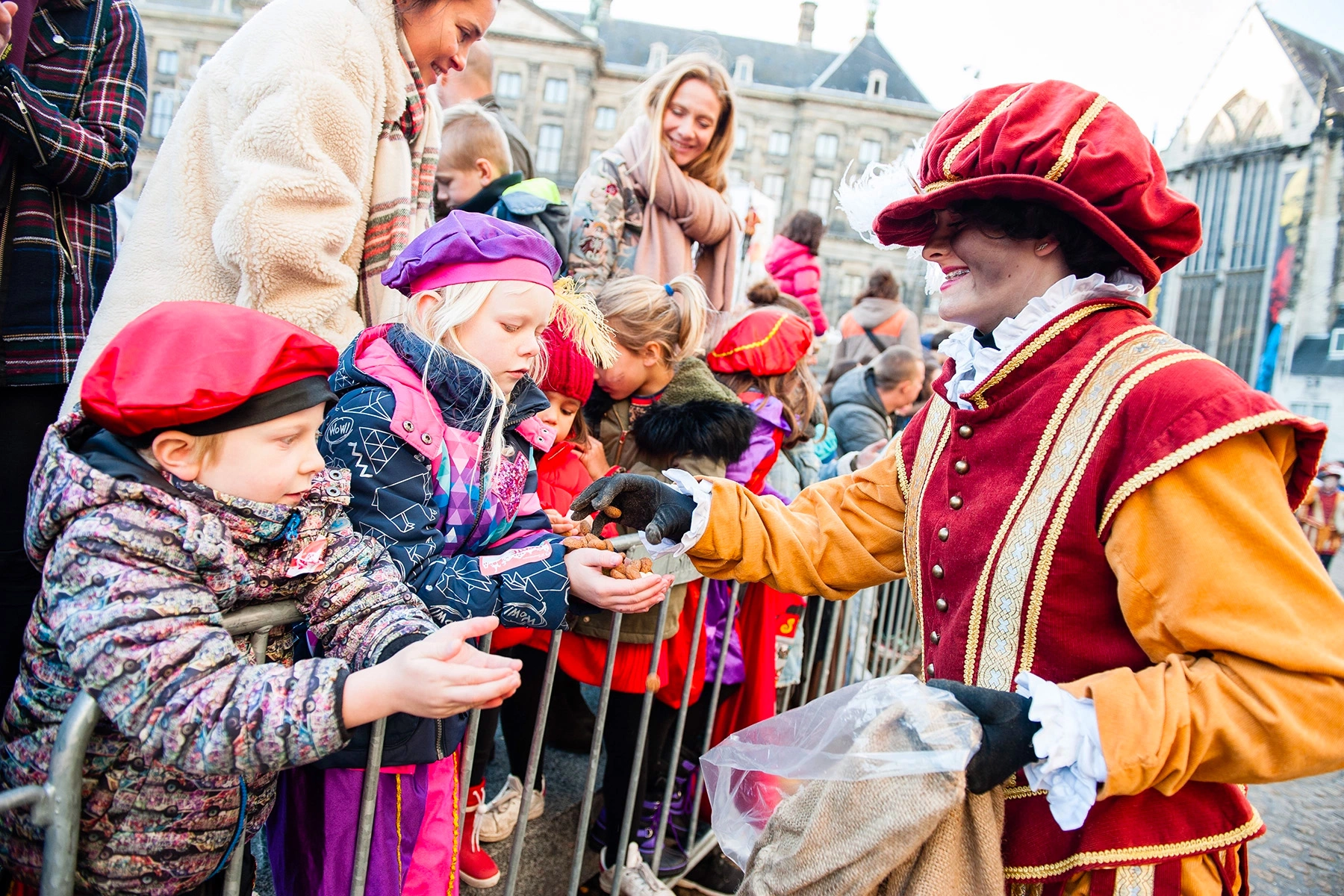
These bite-sized treats come in various flavors, including those covered in chocolate. You can also buy a mixed bag with pepernoten, tum tummetjes, and schuimpjes; this is called strooigoed (i.e., candy that is scattered around).
Another popular Sinterklaas treat is the chocolate letter (chocoladeletter). These delightful confections are usually made of high-quality chocolate (milk, dark, or white, depending on your taste) and molded into the shape of a letter. It’s very common to get the first letter of your name in your shoe (see below) or during pakjesavond.
Other typical treats include:
- Gingerbread dolls (taai taai)
- Marzipan (marsepein) or fondant
- Borstplaat (similar to fudge)
- Frogs (kikkers) and mice (muizen)
- Chocolate coins (munten)
- Banketstaaf or amandelstaaf
- Speculoos doll (speculaas pop)
Schoenzetten (i.e., placing your shoe)
In the weeks leading up to 5 December, young children can ‘place their shoe’ (schoen zetten) at night to get fruit, candy, or small presents. They typically do this just three to five times per year and usually only on the weekends.
Traditionally, shoes are placed in front of the fireplace. Nowadays, you can also leave them near the central heating system or backdoor and window as long as Pete can still go inside. Some stores and public places also allow children to leave out paper shoes. That way, every child can get candy regardless of their economic background.
Usually, the child will give Sinterklaas and his entourage something as well (e.g., a carrot, apple, or sugar cubes for the horse and a drawing or letter for Sint and Pete). They’ll also sing songs (sinterklaasliedjes) to let them know their shoes are set.
The next morning, it’s apparent Sinterklaas and Pete stopped by because the carrots and drawings are gone, having been replaced by candy.
What is pakjesavond?
On the evening of 5 December, families of young children gather around to celebrate Sinterklaas. Some parents will leave a sack full of gifts near the front or back door and ask a neighbor to knock (making it appear as if Pete just dropped them off). Others will hide the presents underneath a blanket until they are ready for a magical reveal (usually when the child is distracted).

Each family member will take turns unwrapping a gift. When all is done, people usually sing more songs to thank Sinterklaas and Pete and give them a warm send-off back to Spain.
Do older children and adults also celebrate Sinterklaas?
Between the ages of 6 to 9, children usually realize that Sinterklaas is (gasp) make-believe. They become part of the secret keepers and do their best to keep it magical for those who still believe. However, that doesn’t mean they don’t get presents anymore.
Once the cat is out of the bag for everyone in the family or group, the celebration changes into a Secret Santa. The traditions differ per group (e.g., family, friends, schoolmates, colleagues), but they usually include:
- Drawing names
- Creating a surprise (pronounced sur-preesuh) – DIY wrapping that makes it look like something else, for example, an animal
- Writing a humorous poem – depending on the group, these could be good-natured (talking about the gift), mean-spirited (ridiculing the gift-getter), or something in between
Useful resources
- Sinterklaasjournaal – official website where you can watch the Sinterklaasjournaal
- Meldpunt Zwarte Pete – website that lists which municipality uses which Pete
- Kick Out Zwarte Piet – organization with resources to protest against the character of Zwarte Piet
